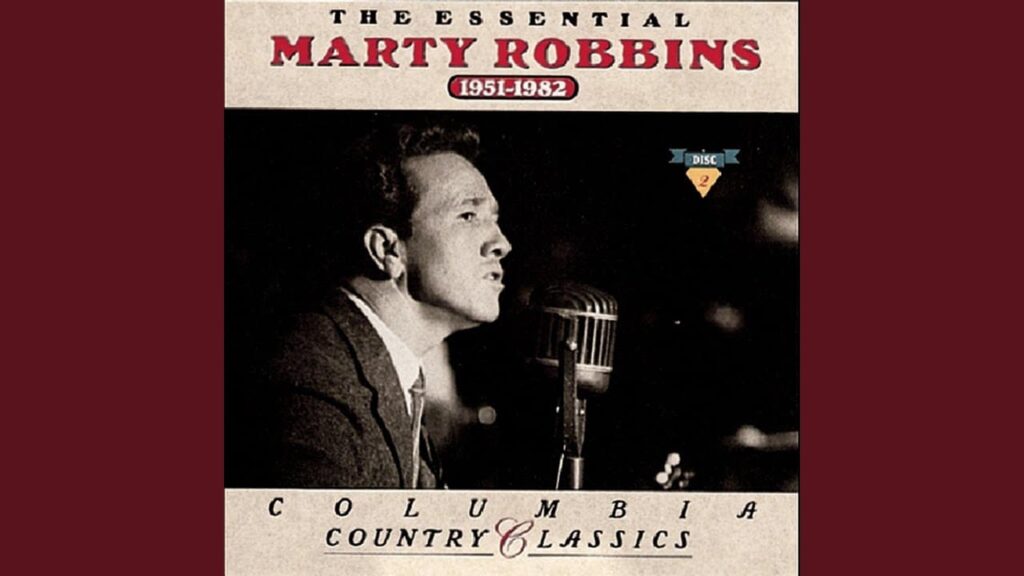
A Haunting Warning from the Western Skies: Marty Robbins’s “(Ghost) Riders In The Sky”
There are melodies that just seem to inhabit the very air, passed down through generations, taking on new life with each voice that lends itself to their timeless power. Marty Robbins‘s rendition of “(Ghost) Riders In The Sky” is one such song, a spectral journey into the heart of a cowboy legend that continues to send a shiver down the spine and stir the soul. It’s more than just a tune; it’s a cautionary tale whispered on the wind, a stark reminder of the consequences of a hardened heart and a life lived without redemption.
While “(Ghost) Riders In The Sky” is a traditional song covered by countless artists, Marty Robbins brought his unique dramatic flair and storytelling mastery to it. Though his version wasn’t a standalone chart-topping single in the immediate aftermath of its original release by Stan Jones in 1949 (where Vaughn Monroe notably hit number 1), it became an enduring favorite within his expansive repertoire, particularly featured on his classic albums like Gunfighter Ballads and Trail Songs (1959), which itself peaked at number 6 on the Billboard 200 and has since been certified Platinum. Robbins‘s commitment to authentic Western narratives meant that this haunting ballad found a perfect home among his tales of the range, gunslingers, and the vast, unforgiving landscape. His distinct baritone, capable of both tender vulnerability and ominous pronouncements, imbued the song with an almost palpable sense of foreboding.
The genesis of “(Ghost) Riders In The Sky” lies with songwriter Stan Jones, a park ranger and aspiring songwriter, who claimed he was inspired by a tale told to him by an old Native American man when he was just 12 years old. This story, rooted in the folklore of the American West and echoing older European myths of the “Wild Hunt,” describes a lone cowboy who witnesses a terrifying vision: a herd of red-eyed, steel-hooved cattle thundering across the sky, endlessly pursued by a legion of ghostly cowboys. Their faces are gaunt, their shirts soaked with sweat, eternally chasing a herd they can never catch. One of these spectral riders issues a chilling warning to the living cowboy: change your ways, or you too will be condemned to ride forever with them, “trying to catch the Devil’s herd across these endless skies.”
The meaning of “(Ghost) Riders In The Sky” is a potent blend of Western myth, moral allegory, and a deep, existential dread. It speaks to the burden of sin, the consequences of a life lived without compassion, and the possibility of eternal damnation. The “red-eyed cows” and “steel-hooved” horses symbolize the hellish nature of their endless pursuit, while the “brands still on fire” on the cattle represent the indelible marks of their earthly transgressions. The ghostly riders themselves are a grim testament to unrepentant souls, forever trapped in a Sisyphean task. The song serves as a powerful reminder of the importance of spiritual redemption and living a righteous life, lest one be condemned to a similar fate. It taps into a universal human fear of eternal unrest and the desire for peace in the afterlife.
For many of us who grew up with the sounds of country and Western music, Marty Robbins was a voice of authority, a troubadour who could transport you to dusty trails and campfire tales. His interpretation of “(Ghost) Riders In The Sky” wasn’t just a song; it was a vivid cinematic experience for the ears, conjuring images of dark, windswept nights and the mournful cries of the damned. It speaks to a bygone era, when cowboys and their legends held a powerful grip on the American imagination, and when the line between the earthly and the supernatural felt thin indeed. Listening to it now, that resonant voice and the galloping rhythm still evoke a powerful sense of awe and reflection, reminding us that even the most adventurous paths can lead to a reckoning, and that some warnings, even from beyond the grave, should be heeded.